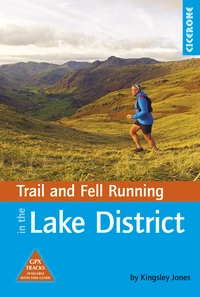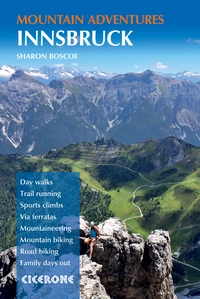Welcome to the world of fastpacking
Put simply, fastpacking is the hybrid of running, hiking and lightweight backpacking. It’s a multi-day running trip carrying the bare essentials. Underpinning the activity is the principle of ‘fast and light’ – taking only the kit you need to stay safe and happy, and nothing more. This allows you to travel further and faster in a day compared with hiking, by running whenever the terrain allows it. Lily Dyu explains the concept of this fast-growing niche in the trail running world.
What is fastpacking?
Over recent years there has been a boom in trail and ultra-running and stage races. This has evolved into offshoots such as Fastest Known Times, or FKTs, where runners try to set speed records on established routes, such as Damian Hall completing the UK’s 630-mile South West Coast Path in less than 11 days and Kilian Jornet running and climbing over Mont Blanc, starting in Courmayeur and finishing in Chamonix nine hours later.
To purists, fastpacking means being self-sufficient through wild camping, but there are many styles of trip: from running with a pack between overnight stops, like guesthouses and hostels, to bothying in remote wilderness locations. Hut-to-hut running is increasingly popular in places like the Alps, where networks of mountain refuges and shelters in spectacular locations provide hot meals and a bed, allowing you to live well and travel light.
Why fastpacking?
You could see it as adventure racing without the race. It’s about exploring and enjoying your surroundings at your own pace. The reward is the journey itself and the thrill of moving fast and light in the wild. There is a special satisfaction in making a running journey powered by your own two feet and seeing your surroundings change as you go. And by carrying no more than you need, fastpacking provides a beautiful sense of simplicity and freedom.
Fastpacking
Multi-day running adventures: tips, stories and route ideas
£16.95
Guidebook to fastpacking - multi-day running trips carrying the bare essentials - in the UK, Europe and beyond. Includes 12 route ideas (all tried and tested), fastpacking stories from around the world (featuring Jez Bragg, Anna Frost and Jasmin Paris), and invaluable tips and tricks to help you prepare for your own running adventure.
More informationFastpacking routes in the UK
My first fastpacking trip was the West Highland Way over five days (which sounds pretty casual when you consider the record for the 95-mile route is under 14 hours). Since then, I’ve run many of the UK’s long-distance paths, including the South Downs Way and Wainwright’s Coast to Coast; devised my own routes such as a three-day traverse of Wales; wild camped on Dartmoor and run between bothies in the wilds of Knoydart. Two-day micro-adventures have been as enjoyable as running on Gower, through the Black Mountains and Brecon Beacons while staying at hostels and bunkhouses.
How fit do I need to be?
You don’t need to be an ultra athlete or an extreme adventurer to go fastpacking. It’s a lot easier than you’d imagine. And for those who hate planning, there are many companies who will take all of that off your hands, including moving your bags and booking your accommodation, allowing you to just run with a day pack.
A good first trip is an out-and-back run to a youth hostel or guesthouse so you carry only minimal gear. In the UK, The South Downs Way and West Highland Way are great routes for your first multi-day run. The trails are friendly and easy to follow, and there’s plenty of accommodation if you don’t want to carry camping gear. Daily distances and climbing can be kept to whatever you are comfortable with.
What kit do you need?
If you are wild camping or using bothies you will need a tent, stove, sleeping bag and mat, as well as food. Your clothes will be a significant weight in your pack and the goal is to pack minimally while ensuring you have everything you need for the expected conditions. Always remember that pack weight will significantly affect your enjoyment of the trip.
Also consider multi-uses for different items of gear. A pair of running tights will be travel-wear, evening-wear or running-wear when it’s cold or wet. A fleece top for the evening will be an extra running layer if it gets cold. A buff could be a beanie, headband, travel towel or wrist sweat-band.
While there is a lot of ultra-lightweight equipment on the market, don’t get too hung up on gear. Just pick a route and give multi-day running a try. Quite simply, for anyone who loves running, fastpacking is a great way to travel, explore and discover new places.
Food
Eating and nutrition will play an important role in your trip. Fastpacking gives you licence to eat a lot of food! It’s important to eat frequently while you’re moving and to adequately refuel in the evenings. Runners will have their own preferences for food and an eating schedule, but the main advice here is to remember your energy requirements will be high and to ensure that you stay fuelled and hydrated throughout.
Fastpackers who wild camp fall into two categories when it comes to food: cold or hot. Some people carry only food they can eat cold, so they can avoid taking a stove and fuel. For others, a hot drink and meal at the end of the day is worth the extra weight, especially if it’s been wet and cold.
Fastpacking tips
- You don’t need to be an ultra athlete or an extreme adventurer to go fastpacking. It’s a lot easier than you’d imagine. And for those who hate planning, there are many companies who will take all of that off your hands, including moving your bags and booking your accommodation, allowing you to just run with a day pack.
- Staying hydrated while fastpacking is critical, given the high levels of exertion from running long distances with a pack. You should drink plenty of water and have your water bottles or bladder drinking tube easily accessible at the front of your pack. As well as drinking on the trail, it is also crucial to rehydrate well in the mornings and evenings during your trip.
- Pack for your destination and the worst conditions you might encounter. If it’s 30 degrees outside a city hotel room when you’re packing, don’t forget that in an Alpine hut at 3000m you may see snow even in summer.
- Always carry a head torch on a fastpacking trip, in case you make slower progress than planned and accidentally end up on a trail in the dark or fading light.
- Travel wearing your spare running gear and running shoes. Don’t carry around spare clothes for your flight or return journey – this is dead weight. Accept that you will look like a gnarly adventurer from when you leave your front door. This also makes life simple since you have no clothing choices to make!
- For overseas trips, if starting and returning to the same place, you can leave a bag of gear at a hotel, airport or train station for your return journey or the rest of your trip.
Some ideas for fastpacking routes
- Run from the Irish Sea to the North Sea across northern England by following Wainwright’s Coast to Coast route. Although it is an unofficial and mostly unsignposted trail, it attracts thousands of walkers each year. With its constantly changing scenery it also makes a superb running trip that will test your ability to navigate.
- Hut-to-hut running is a wonderful way to experience the mountains. Try the Alta Via 1 route in the Dolomites for stunning trails, Italian huts and hospitality, or the Tour du Mont Blanc route for a taste of the iconic trails of the UTMB.
- Fancy fastpacking the length of a country? Anna McNuff spent 148 days running the length of New Zealand on the Te Araroa trail, solo and unsupported, covering 3000km. She wild camped and stayed in hostels and huts along the way, while going into schools to speak with children, to inspire them to get outdoors.
Find more tips, stories and route ideas in our guidebook Fastpacking by Lily Dyu












